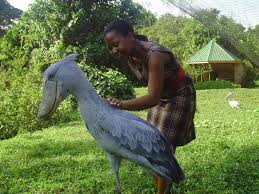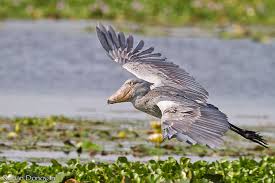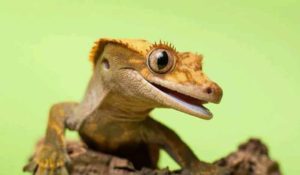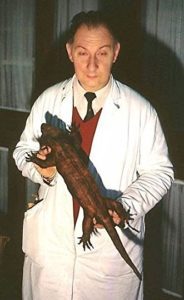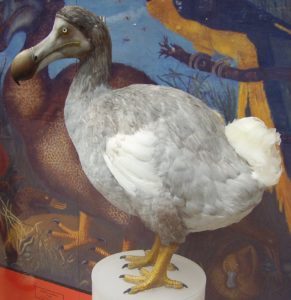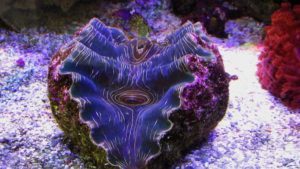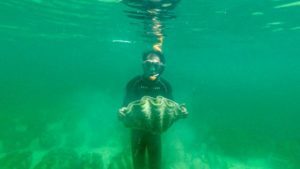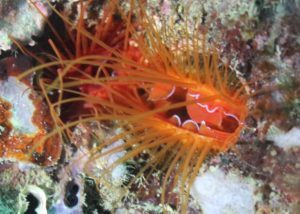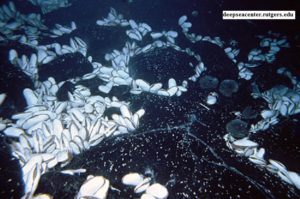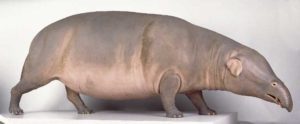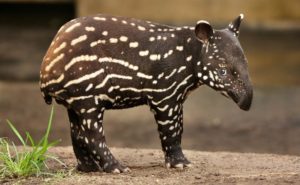Podcast: Play in new window | Download (Duration: 16:35 — 14.6MB)
Episode 21 is all about the Tatzelworm, a mysterious reptile from the Alps, and some of its mystery reptile friends from around the world!
Further reading:
The Iraqi afa – a Middle Eastern mystery lizard
Giant Lizard Discovered in the Philippines
Bipes, a two-legged amphisbaenid from Mexico:
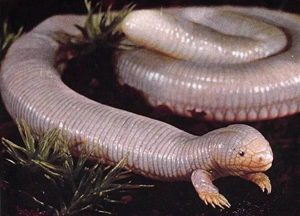
A cute little skink. Big eyes, little legs:
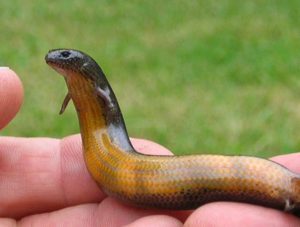
A handful of bigger baby skinks. OMG WANT
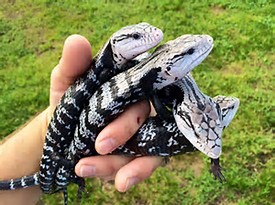
A modest-sized monitor lizard in a tree:
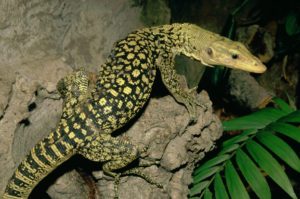
The newly discovered Northern Sierra Madre forest monitor, Varanus bitatawa:
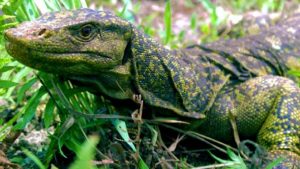
Show transcript:
Welcome to Strange Animals Podcast. I’m your host, Kate Shaw.
This week we’re going to examine some mysterious reptiles. If you like this episode, there’s a companion episode for Patreon subscribers about the Beast of Busco, which you can access for a mere $1 pledge a month (just saying). But honestly, I’m just happy to have you as a listener no matter what.
Let’s start with a mystery animal that has intrigued me for a long time. A lot of cryptids are described as gigantic, or they live in far remote corners of the world. But the tatzelworm is a modest animal that lives in the Alps.
Generally, the tatzelworm is described as a sort of lizard with a snakelike body between one and three feet long [30 cm to 1 m], gray or whitish, with large bright eyes, a rounded head often described as catlike, and small forelegs. Sometimes it’s described as having no legs at all, only front legs, or the normal complement of four legs.
There have been a lot of sightings over the years, going back to at least the early 16th century. The earliest sightings are of tatzelworms seven feet long [2 m], which I’m inclined to put down as exaggerations over the years. The earliest documented sighting is from around 1711, when a man named Jean Tinner and his father spotted one on Frumsemberg Mountain, Switzerland. Tinner described it as coiled up on the ground, limbless, but with a catlike head. In 1779, a man named Hans Fuchs saw two of them, ran home in a panic and told his family, and promptly dropped dead of a heart attack.
The more recent sightings are of more reasonably sized animals. In 1921, a poacher and his friend hunting in the Alps in Austria saw a tatzelworm on a rock, watching them. It was gray, two or three feet long [61-92 cm] with two legs, a thick tail, and a catlike head. Its body was described as thick as a human arm and its head was fist-sized. The poacher shot at it but it jumped at the men and they ran.
In 1922, two sisters playing in the woods in St. Pankraz, Austria saw one crawling among some rocks. It was gray, a bit over a foot long [30 cm], and looked like a giant worm, but had a pair of paws behind its head.
The clearest and most reliable description we have comes from April 1929, when an Austrian teacher searching for a cave entrance spotted a tatzelworm. In his book The Lungfish, the Dodo, and the Unicorn, Willey Ley quotes the teacher’s account, which I’ll read.
One note: Tempelmauer means temple wall. Karl Shuker indicates in his book The Beasts That Hide from Man that the teacher was climbing Mount Landsberg. I can’t find the original of the account; it’s undoubtedly in German, and since Ley was born in Berlin, he may have translated the account himself. There is a mountain called Landsberg in Austria with two peaks, called Grosser and Kleiner Landsberg respectively. Since the teacher mentions cliffs, it could be these are the structures referred to as temple walls by locals.
Anyway, here’s the account from Ley’s book, page 133:
“Well equipped, I started out on a spring morning and after a short climb I reached the top of the Tempelmauer. After a short rest between the cliffs I started to look for the entrance to the cave. Suddenly I saw a snake-like animal sprawled on the damp rotting foliage that covered the ground. Its skin was almost white, not covered with scales but smooth. Its head was flat and two very short feet on the fore-part of the body were visible. It did not move but kept staring at me with its remarkably large eyes. I know every one of our animals at first glance and knew that I faced the one that is unknown to science, the tatzelwurm. Excited, joyful, but at the same time somewhat fearful, I tried to grab the animal but I was too late. With the agility of a lizard the animal disappeared in a hole and all my efforts to find it were in vain. I am certain that it was not my imagination that let me see the animal but that I observed with a clear head.
“ ‘My’ tatzelwurm did not have large claws but short and atrophied-looking feet; his length did not exceed 40 or 45 centimeters [16-18 inches]. Most probably the tatzelwurm is a rare variety of salamander living in moist caves and coming only rarely to the light of day.”
The tatzelworm has many local names, including stollworm or stollenworm, springworm, and so forth. Tatzelworm is almost always translated as “clawed worm” online, but according to Ley it means a worm or snake with paws. Stollworm means cave worm, springworm means jumping worm, and stollenworm means hole worm. Worm in this instance means anything snakey or wormy, that kind of shape.
While the various local legends state that tatzelworms are aggressive, venomous, and attack local livestock, the actual sightings are all pretty innocuous. Tatzelworms aren’t out there eating people. In fact, they’re usually pretty hard done by when meeting humans. In the South Tyrol area of Italy, one winter a year or two prior to 1910, a farmer found a torpid tatzelworm in some hay, either asleep or hibernating. He killed it, of course, and noted that he saw green liquid seeping from its mouth after it was dead. He didn’t save the body.
That’s the problem with all these sightings. We need a body. In 1828, a peasant in Switzerland found a tatzelworm corpse in a dried-up marsh. He collected it, but before he could send it to be examined, crows ate it. He did eventually send the skeleton to Heidelberg, but it either never arrived or was lost when it got there.
In 1969, two naturalists supposedly found the skeleton of a lizard-like animal in the Alps, near Domodossola, Italy, but I can’t find any further information about it, so the skeleton was probably found to be nothing mysterious.
There have been hoaxes, of course. The photo of a snakelike skeleton with enormous clawed arms: hoax. At various times, stuffed specimens, dead animals, reptile skins, and photographs have been offered as proof of real tatzelworms, but every case has proved to either be a hoax or a misidentification of a known animal. The Alps are a huge mountain range some 750 miles long, crossing eight countries. They’re not as high as the Andes, Himalayas, or Rockies, but like those mountain ranges, they have plenty of unexplored, hard to reach areas. Plants and animals new to science are still occasionally found there, including a new species of viper only discovered in 2016.
At one point the Nature and Forestry departments in Austria insisted that the tatzelworm was just an otter, but locals naturally scoffed at this. They knew what otters looked like, and this was no otter.
The giant salamander hypothesis is a little more reasonable in that the tatzelworm does seem to like wet areas. In fact, in some parts of the Alps its appearance is said to be an omen of flooding. But if you listened to episode 14 about giant salamanders, you’ll probably agree with me that the tatzelworm doesn’t sound at all like those big guys.
There are other large salamanders that aren’t related to actual giant salamanders, and which are much more slender. Amphiumas are snakelike salamanders that live in water and have vestigial limbs, and the siren salamanders are eel-like with four limbs. The greater siren can even grow to almost three feet long [1 meter]. But those are only found in North America, and none of the known sightings of the tatzelworm seem to be describing an amphibian.
If you’ve listened to episode 10, about electric animals, you might remember the Mongolian death worm. In that episode, I suggested a new species of amphisbaenid might be responsible for reports of the death worm. There are over 180 species of amphisbaenians, most of them legless, but four species found in Mexico have tiny forelegs but no hind legs. It’s possible the tatzelworm is an unknown amphisbaenid. They’re burrowing reptiles, usually no longer than about six inches long [15 cm], that eat insects and earthworms. They resemble earthworms, for that matter, although they have scales. They move like a worm, too, sometimes called accordion-like movement, and can move backwards that way as well as forwards. Most species have blunt heads and blunt tails, so that it’s hard to tell which end is which, and since their eyes are tiny and almost invisible, that adds to the confusion.
But the tatzelworm’s eyes are frequently referred to in sightings as being large and bright, and no one could describe any amphisbaenid as cat-headed. It’s hard to tell where the head is at all.
A skink, on the other hand, might fit the description. Skinks are long, slender lizards with large eyes and somewhat rounded heads. Many species have no legs and most species with legs have very small ones. In 2012, a skink with a pair of tiny forelegs and no hind legs was discovered in Thailand, and the common burrowing skink from South Africa only has hind limbs.
Most skinks like to burrow. Some even dig elaborate tunnel networks. A skink will frequently come out to bask in the sun, but will flee to its burrow if disturbed. Skinks are generally bigger than amphisbaenids too. The Solomon Islands skink is over a foot long [30 cm] not even counting its tail. So it’s not out of the question that the tatzelworm might be a skink that can grow up to several feet long [1 m] and either has no hind limbs or quite small ones that are easily overlooked. Skinks with reduced limbs move like snakes, not like worms.
There is a genus of skink that has green blood, incidentally. Species of Prasinohaema live in New Guinea and the Solomon Islands, and their blood is green because of the massive amounts of biliverdin, a waste product of the digestive system that is toxic in large amounts. But these skinks are immune to the toxicity. Researchers think it may be a protection from blood-borne parasites like malaria, so since the Alps aren’t exactly a hotbed of tropical parasites, they can probably be ruled out. It’s neat, though. The blood still contains hemoglobin, which is what makes blood red, but there’s so much of the biliverdin that you can’t tell that there’s any red in there at all. In 2007, a green-blooded frog was found in Cambodia too.
There don’t seem to have been very many organized searchers for the tatzelworm. In the 1930s an expedition was sponsored by a Berlin magazine, but I couldn’t find any information about it. In 1997, cryptozoologist Ivan Mackerle led an expedition in the Austrian Alps without any luck. He also interviewed locals about the tatzelworm and discovered that only older residents knew about it, and he suggested it may be extinct. Since the expedition was only a week long, I think he might be jumping the gun a little bit.
By the way, if anyone is thinking of planning an expedition of their own, I am totally available to hunt for tatzelworms in the Alps if you want to buy me a plane ticket. I am not even kidding.
There are plenty of other mystery reptiles out there, of course. Take the so-called kumi lizard. In 1773, a Maori chief told Captain Cook about a huge lizard that lived in New Zealand. It grew 5 to 6 feet long and lived in trees, and while the Maori were afraid of it, they also hunted and ate it. In 1898, a Maori bushman in Arowhana, New Zealand reportedly saw a lizard five feet long [1.5 m]. It threated him, then retreated and climbed a tree. That was the last reported sighting of the kumi lizard, but some possible subfossil remains were found. In 1874, a partial lower jaw of an unknown lizard was found in a cave in central Otago. It’s possible that occasionally a crocodile monitor, which lives in New Guinea and can grow up to 13 feet long [4 m], might be carried by currents to New Zealand. On the other hand, that’s a 3,000 mile trip [4,800 km] over open ocean. It’s more plausible that there was once a monitor lizard or another type of large lizard native to new Zealand, but that it went extinct a few hundred years ago. It might even still be around.
In 2009, a new species of monitor lizard was discovered in the Philippines, even though the island where it was found is heavily populated and the lizard is more than six feet long [1.8 m]. It’s an arboreal species, living high in the treetops, and it mostly eats fruit. Local hunters knew about it, but scientists had no idea it existed until photographs made it online. A two-month search resulted in the discovery. (I would happily spend two months in the Alps looking for the tatzelworm. I read Heidi, like, so many times as a kid.)
In a book called The Marsh Arabs published in 1964, explorer Wilfred Thesiger mentions a huge lizard called the afa. Thesiger lived for some eight years among the Madan, a group of people from the marshlands around the Tigris and Euphrates rivers. They said that the afa lived in the marshes around the mouth of the Tigris in what is now Iraq. Unfortunately, not only did Thesiger not give any other information about the afa, the rivers have now been diverted away from the area. The marshes are now desert, the madan are long gone, and if the afa ever existed, it’s probably dead.
I was going to end the episode there, but that is way too depressing, so we’ll finish up with one more mystery reptile. The Milton lizard is a mystery from Kentucky in the United States. In July of 1975, Clarence Cable, co-manager of the Bluegrass Body Shop in Milton, Kentucky, saw a huge lizard behind some junked cars. His brother saw the lizard a few days later. Then Cable saw it again the next day. He threw a rock at it and it vanished into some brush, and that was the last anyone ever saw of it.
Cable said the lizard may have been as much as 15 feet long [4.6 m] with black and white stripes overlaid with speckles, and looked like a monitor lizard. That’s probably what it was, too. Monitor lizards are often kept as pets. If one escaped or was turned loose in the area, it would have survived all right until the weather turned too cold. So if you have a pet monitor lizard, keep it safe and warm, and don’t let it wander around in strange junkyards.
You can find Strange Animals Podcast online at strangeanimalspodcast.blubrry.net. That’s blueberry without any E’s. If you have questions, comments, or suggestions for future episodes, email us at strangeanimalspodcast@gmail.com. We also have a Patreon at patreon.com/strangeanimalspodcast if you’d like to support us and get twice-monthly bonus episodes for as little as one dollar a month.
Thanks for listening!

